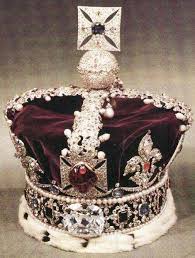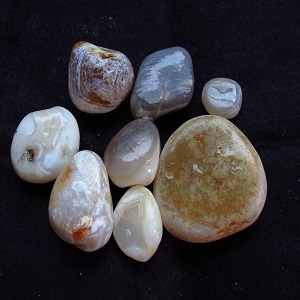?What is spinel
Spinel is a stone with a chemical composition of MgAl2O4, which can grow in octahedron or cubic, isometric, eight-level, twelve-level, and twin forms. It has Mohs hardness of 8, high resistance, and specific gravity between 3.5 and 3.61. Spinel stone can be found in three geological conditions
1) as crystals in marbles or dolomites that have been subjected to contact metamorphism. 2) as irregular grains in basic igneous rocks. and 3) in the form of alluvial crystals and pebbles in alluvial sediments
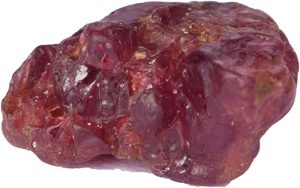
Spinel is very resistant to chemical and physical weathering. So when it occurs in marble, dolomite, or igneous rocks, spinel crystals are released as the rock weathers. Spinel crystals are then transported downslope by mass wasting or flowing water. This places spinel in alluvial deposits, where it is concentrated due to its high specific gravity. These alluvial deposits have been worked by gem miners for over 1,000 years

:Table of characteristics of spinel stone
The chemical composition of MgAl2O4
Color brown, colorless, red, blue, garlic green, black
The color of the outline is colorless to white
Transparent to semi-opaque transparency
No cleavage
Fluorescence strong red, red, weak blue, green tendency to weak red, weak green
Refractive index of light 0.712-1.736
Mouse hardness 8-7.5
Specific weight 4.1 – 3.5
Isometric crystal system
Color types of spinel
Spinel is available in a variety of colors from red to garlic green to black and matte, even blue, although in the past it was basically known as red spinel. Its yellow type is Rubicelle, its pure red type is Balas Ruby, bright orange to orange-red (Flame Spinel), brown types (Piconite), dark green to black in which the presence of iron is evident (Hercynite). Spinel), dark green to blackish, which is a little lighter than the Hercynite sample (Pleonaste Spinel)
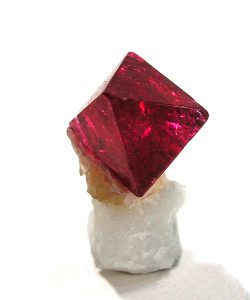
Its blue or purple-blue variety known as Gahno-Spinel was found in 1937 and has a large amount of zinc. Among the rare phenomena in this stone, we can mention the changing color, the Chetoyansi and Trapich phenomenon, the asterism or star (in the form of four and six arms). Spinel is actually the name of a group of metal oxide minerals that cause them to have the same crystallization structure. This mineral can include a set of different mineral compounds with the general formula of XY2O4, which can be replaced by elements such as Fe+2, Zn, Mn+2, Ni, Co, Cu, Mg, and instead of Y Elements such as Fe+3, Cr, V+3, Ti+4, Ge, or Sb Al can be replaced and create a new mineral
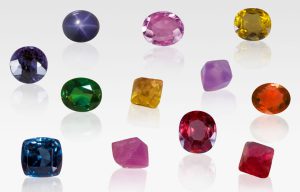
Color spectrum of spinel: Very favorable color is one of the characteristics of spinel that makes it an exceptional gem
Like many other gems like sapphire, jade, agate, etc., Lal stone is enhanced. This means that in order to increase the quality of transparency or to change and improve the color, it is subjected to various processes, which are called “improvement”. Of course, the improvement of spinel, like other gems, does not have a lot of variety, but the same existing methods can have the necessary effects. Thermal improvement, oil improvement, elemental thermal improvement are among the methods of applying changes in spinels
The first synthetic spinel was made in 1847 by the French chemist Jacques-Joseph Ebelmen and was in limited supply at the time. In the 1930s, synthetic spinel was commercially available in imitation of various colors to imitate other stones. These colors are created in a controlled manner with small amounts and replacement of metal elements such as cobalt (blue), manganese (yellow), chromium oxide (green) and iron (pink). There are three methods for making synthetic spinel
Verneuil method (flame-fusion
The flux-melt method
Method (Czochralski (pulling
In the jewelry market, many types of synthetic samples of this stone are sold in the market instead of natural spinel, ruby, garnet, etc. Its synthetic blue sample is more popular, which is sometimes sold instead of sapphire
Some minerals from the spinel group are listed in the following table
Spinel Group Minerals
Mineral composition
Spinel MgAl2O4
Gahnite ZnAl2O4
Magnetite Fe3O4
Franklinite (Zn,Fe,Mn)(Fe,Mn)2O4
Chromite FeCr2O4
Chrysoberyl BeAl2O4
Columbite-Tantalite (Fe,Mn)Nb2O6–(Fe,Mn)Ta2O6
Some methods of identifying spinel with the following tools
Using a microscope: Under the microscope, in synthetic spinel samples, the effects of flux melting or bubbles in the form of patterns and curves are usually seen due to the way they are made and grown. This is while more inclusions are observed in natural samples
Magnets: Natural spinels have some amount of iron in them and therefore show a weak reaction to magnets. This is while no reaction can be seen in the synthetic and artificial spinel samples due to the way they are made
Refractive index of light and specific gravity: natural spinel has a refractive index between 1.72 and 1.74 for red spinel and 1.805 in case of high zinc content. Meanwhile, synthetic spinels have an RI of 1.727 with an error of one thousandth. Also, the specific weight of the natural type is in the range of 3.58-3.61 and the zinc element in it can increase its specific weight to 4.40. This is while synthetic spinels have a specific gravity between 3.64-3.63
:The historical spinels of the world are as follows
Lal Samrian, with a weight of 500 carats and a diameter of 5.5 cm, holds the record for the world’s largest spinel in the National Jewelry Museum of Iran
The comment is a gem. There is a hole inside this spinel. It is said that it belonged to one of the kings of Abyssinia. According to the memoirs of the doctor Naseruddin Shah, the king told him that this hole was due to the use and hanging of a stone to decorate the neck of a golden Samaritan calf, which was later filled with diamonds. Of course, there is no reliable confirmation of this quote and the time when the diamond fell
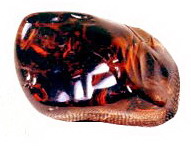
Royal Russian Spinel
At 398.72 carats – approximately 80 grams – Catherine the Great’s ruby is believed to be the second largest spinel in the world. Brought to Russia by Nicholas Spafari, the Russian envoy to China in the late 1700s, the spinel is set among 4,963 diamonds in the Great Imperial Crown, which happens to weigh 9 pounds. This spinel is considered one of the seven historic stones of the Great Russian Stone Collection in the Russian Crown Jewels
The crown’s last appearance at a coronation was that of Nicholas II in 1896, although it was also present at the opening of the Duma in 1906. This legendary crown – with its massive red spinel – is now on display in the State Armory of the Moscow Kremlin.

Timor spinel
With a weight of 361 carats, this stone is the third largest spinel in the world, which bears the name of the greatest conqueror of the 14th century, Timur Khan. Until 1851, it was thought that this is the biggest ruby in the world! This ruby is among the 25,000 real jewels of the kings of the kings of the Koran (Timur). The names of the previous six kings and their dates are engraved on this stone. In fact, Shah Abbas of Iran had given it to Jahangir Shah as a gift. A jewel that was moved from the Hindustan jewel collection to Isfahan (by Nader Shah) in 1153 AH. In any case, in 1851, the East India Company presented the Timor ruby to Queen Victoria, and today this spinel is placed as a gem in a necklace with oriental designs in the British Royal Jewelery Museum
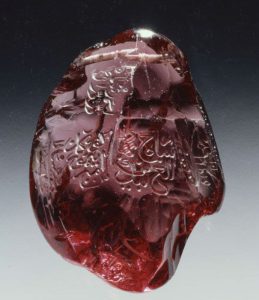
Black Prince’s Ruby
In 1367, the King of Spain gave Edward (Prince of Wales) a 170-carat black ruby as payment for his country’s military support during the civil war. This stone later became known as The Black Prince’s Ruby. It is said that in 1415, this stone saved the life of King Henry V of England in the battle of Agincord (a village in the north of France). In fact, the ruby of the Black Prince was placed in his helmet and resisted the blow of the French duke’s ax, and thus King Henry and the stone both remain safe. If we want to say its value, imagine that this gem was given to the Prince at that time as a payment and a guarantee of the support of an army! But the point that may be useful to us is that later tests revealed that this stone was not a ruby, but actually a spinel! Today, this stone, along with the Cullinan II diamond, is placed in the crown of the Queen of Great Britain
